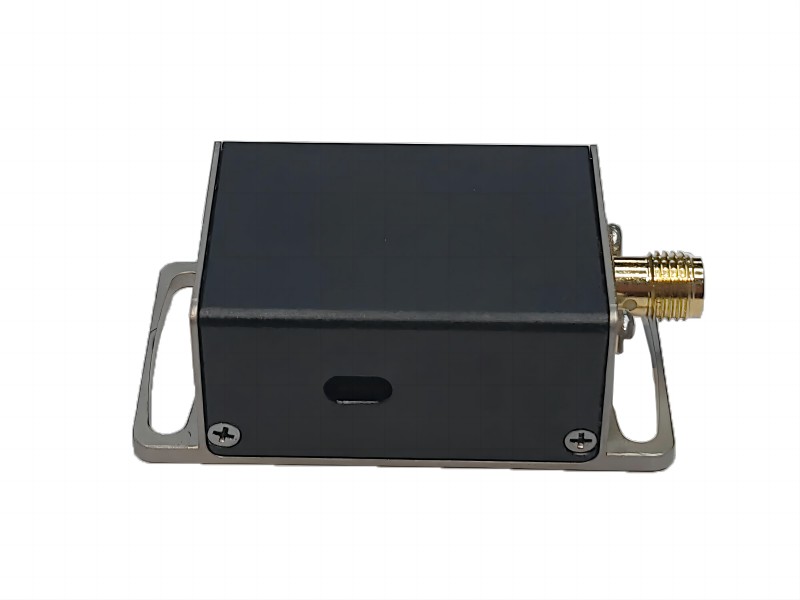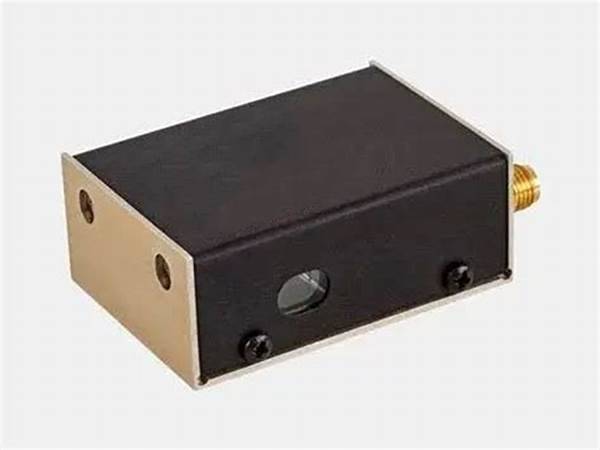-
74 Articoli
-
0 Foto
-
0 Video
-
Female
-
12/11/1918
-
Seguito da 1 persone
© 2026 Scenario.press - libera espressione
 Italiano
Italiano
Aggiornamenti recenti
-
When to Choose an Acousto-Optic Deflector (AOD) Over a Modulator (AOM)Acousto-optic (AO) devices are the unsung heroes of photonics, enabling precise control over light with nothing but sound waves. Two of the most common are the Acousto-Optic Modulator (AOM) and the Acousto-Optic Deflector (AOD). While they work on the same core principle, choosing the wrong one can limit your system's performance. Let’s break down when your application needs the...0 Commenti 0 Condivisioni 72 VisualizzazioniEffettua l'accesso per mettere mi piace, condividere e commentare!
-
Enhancing Material Characterization with Opto-Acoustic ModulationIn the quest to understand what lies beneath the surface, engineers and scientists have long been limited. Optical methods see only the exterior, while traditional ultrasound often lacks the fine detail needed for modern materials. A powerful hybrid technology is bridging this gap: opto-acoustic modulation. By marrying the precision of light with the penetrating power of sound, it is redefining...0 Commenti 0 Condivisioni 96 Visualizzazioni
-
Beam Deflection and Beam Steering Using Acousto-Optic Modulators (AOMs)Abstract: While commonly known for intensity modulation, Acousto-Optic Modulators (AOMs) are also powerful tools for precise, rapid, and non-mechanical control of laser beam direction. This article explains the principles of Bragg diffraction-based beam deflection, explores the design of specialized Acousto-Optic Deflectors (AODs), and discusses their key applications and performance...0 Commenti 0 Condivisioni 169 Visualizzazioni
-
Why 397 nm AOMs Are the Unsung Heroes of Spaceborne Quantum TechnologiesWhen we picture breakthrough quantum technologies in space—ultra-precise atomic clocks, gravitational wave detectors, or quantum sensors mapping Earth's fields—we often imagine the cold atom clouds at their heart. But behind every stable, laser-cooled atom in a vacuum chamber is a suite of precision tools making it possible. Among the most critical, especially for missions involving...0 Commenti 0 Condivisioni 397 Visualizzazioni
-
When we talk about technology for space, we often picture rockets, satellites, and rovers. But the real magic often lies in the sophisticated components that make these systems work. One such unsung hero is the Space Acousto-Optic Modulator (AOM). This device is a master of light control, and its design is a marvel of physics and engineering tailored for the harsh environment of space.
https://www.cq-smart.com/space-acousto-optic-modulator-aom-aofsWhen we talk about technology for space, we often picture rockets, satellites, and rovers. But the real magic often lies in the sophisticated components that make these systems work. One such unsung hero is the Space Acousto-Optic Modulator (AOM). This device is a master of light control, and its design is a marvel of physics and engineering tailored for the harsh environment of space. https://www.cq-smart.com/space-acousto-optic-modulator-aom-aofs WWW.CQ-SMART.COMSpace Acoustic Optical Modulator and Frequency Shifter - SMART SCI&TECHFor years, we've been at the forefront of acousto-optic device design and manufacturing, pushing the boundaries of technology in this field.0 Commenti 0 Condivisioni 457 Visualizzazioni
WWW.CQ-SMART.COMSpace Acoustic Optical Modulator and Frequency Shifter - SMART SCI&TECHFor years, we've been at the forefront of acousto-optic device design and manufacturing, pushing the boundaries of technology in this field.0 Commenti 0 Condivisioni 457 Visualizzazioni -
Why Ultra-Narrow Linewidth Matters: The Physics Behind Coherence and Spectral PurityIn the world of lasers, we often focus on metrics like power and wavelength. But for high-precision applications, a far more subtle and critical characteristic emerges: linewidth. When a laser boasts an "ultra-narrow" linewidth, it's not just a minor technical improvement—it's a fundamental leap in performance that unlocks entirely new capabilities. But what exactly is linewidth,...0 Commenti 0 Condivisioni 568 Visualizzazioni
-
Design Optimization Strategies for AOM Drivers and RF ElectronicsAcousto-optic modulators (AOMs) are workhorses in photonics, enabling precise control over laser beams—from simple switching and attenuation to complex frequency shifting and pulsing. However, the performance of an AOM is intrinsically tied to the quality and sophistication of its two key electronic components: the RF driver and the power amplifier. To achieve higher diffraction...0 Commenti 0 Condivisioni 809 Visualizzazioni
-
In modern optical systems, real-time beam steering has become a critical capability, enabling dynamic control of laser beams for applications ranging from microscopy to laser communications. Among the technologies enabling this functionality, acousto-optic deflectors (AODs) stand out due to their speed, precision, and reliability. Understanding how AODs facilitate real-time beam steering provides insight into their transformative role in advanced photonics.
https://www.cq-smart.com/acousto-optic-deflectors-principles-applications-and-resolutionIn modern optical systems, real-time beam steering has become a critical capability, enabling dynamic control of laser beams for applications ranging from microscopy to laser communications. Among the technologies enabling this functionality, acousto-optic deflectors (AODs) stand out due to their speed, precision, and reliability. Understanding how AODs facilitate real-time beam steering provides insight into their transformative role in advanced photonics. https://www.cq-smart.com/acousto-optic-deflectors-principles-applications-and-resolution WWW.CQ-SMART.COMAcousto-optic Deflectors: Principles, Applications, and Resolution - SMART SCI&TECHThe acousto-optic deflector (AOD) is a valuable instrument within the field of optics, employing the interaction between sound waves and light waves0 Commenti 0 Condivisioni 964 Visualizzazioni
WWW.CQ-SMART.COMAcousto-optic Deflectors: Principles, Applications, and Resolution - SMART SCI&TECHThe acousto-optic deflector (AOD) is a valuable instrument within the field of optics, employing the interaction between sound waves and light waves0 Commenti 0 Condivisioni 964 Visualizzazioni -
Comparing 1550nm Fiber AOM Series with Other WavelengthsAcousto-Optic Modulators (AOMs) are critical components in fiber-optic systems, offering precise control over light modulation through the interaction of sound waves and optical signals. Among the various wavelengths used, the 1550nm fiber AOM series stands out, particularly for telecommunications, sensing, and LIDAR applications. However, it’s essential to understand how 1550nm AOMs...0 Commenti 0 Condivisioni 1K Visualizzazioni
-
How Passive Optical Devices Support Mobile NetworksMobile networks have evolved rapidly over the past decade, driven by the demand for faster speeds, higher capacity, and more reliable connectivity. While much attention is given to towers, antennas, and spectrum, the backbone of these networks relies heavily on passive optical devices. These components play a crucial, often overlooked role in ensuring mobile networks run smoothly....0 Commenti 0 Condivisioni 1K Visualizzazioni
Altre storie



